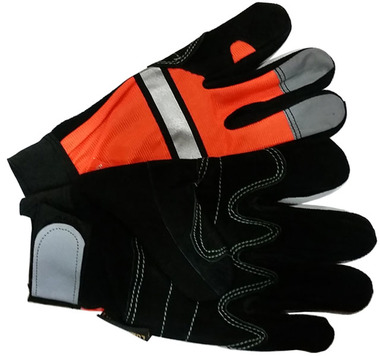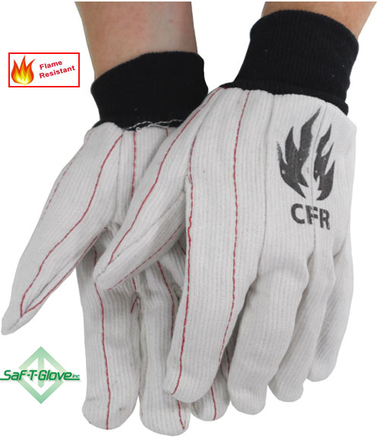2018 Guide to Safety Gloves
Oct 4th 2018
Your hands are your livelihood; protecting them while at work should be at the top of your to-do list. When the correct gloves are selected and worn, safety gloves can prevent life-changing injury from occurring. There is a wide range of safety gloves from which to choose. They can protect against environmental hazards, chemical exposure, excessive heat, biological waste, and they can help prevent puncture wounds.

Workers not only need gloves that allow them to work safely, but they also need gloves that allow for dexterity. The gloves need to fit properly otherwise they can lead to accidents on their own accord. Getting employees to be compliant in their use of safety gloves is also of importance.
Laws and Regulations
OSHA's general requirements for hand protection (1910.138) mandate that employers must select the appropriate hand protection for their employees that protect them from the hazards of the workplace. It puts the onus on the employer to ensure that employees are wearing their safety gloves at all times when it is appropriate.
Section 1910.138(b) states that the employer must make the right choice of safety gloves based on an evaluation of the hazards in the particular workplace.
Safety Gloves Are Effective in Preventing Injuries
According to the U.S. Department of Labor, injuries to the fingers and hands account for more than 23% of all work-related injuries. Two interesting facts emerged in their recent study; the first being the vast majority of those injured were not wearing gloves, and second that many were wearing the wrong kind of gloves. Often workers who were injured were wearing gloves that were inappropriate for the tasks they were performing, or they were wearing gloves that didn’t fit correctly.
According to a recent Occupational Safety and Health Administration (OSHA) study, 70.9% of hand injuries could have been prevented had personal protective equipment (PPE) been used, specifically safety gloves.
- It is the employer’s responsibility to supply and educate employees in the proper use of their safety gloves - when they must be used, how long they will last, and what is the proper glove for any particular job.
- It is the employee’s responsibility to be compliant in the wearing of safety gloves, and in ensuring that the safety equipment in use is in good repair and fits properly.
Improving Compliance

One way to increase compliance is by making sure your workers have gloves that fit properly. A glove that fits well is much more likely to be used as it doesn’t interfere with daily duties. A loose glove makes tasks that require dexterity more difficult, and a poor fitting glove can also lead to blisters that makes wearing them painful. By measuring the circumference of your palm at its widest part with a tape measure you can get an accurate sizing of your hand. Most gloves come in sizes (XS) 6”-7”, (S) 7”-8”, (M) 8”9”, (L) 9”-10”, and (XL) 10”-11”.
Safety Glove Options
- Disposable gloves - These are the most common type of gloves used. They are used mostly to protect workers in the medical field and are also used by food handlers. They also come in hypoallergenic varieties.
- Fingerless gloves - These gloves come in a variety of materials and offer protection to the top of the hand and palm while still allowing for dexterity.
- Cotton and fabric gloves - These offer very basic protection, and help to keep hands clean while protecting against abrasions. Being cotton they are not a good defense against rough or sharp materials. They can be reused but should be cleaned often.
- Coated fabric gloves - These gloves offer protection from chemicals. They are used in laboratory settings and can be constructed to handle specific chemical compounds.
- Rubber, plastic, or synthetic gloves - These gloves are used when working with solvents, oils, or other chemicals. They also reduce the risk posed by exposure to blood and other infectious agents.
- Leather gloves - These are the types of gloves used by welders. The leather is resistant to heat and sparks. Leather gloves can help in the prevention of abrasions and cuts.
- Aluminized gloves - These gloves are used in very high-temperature applications like welding, furnace, or foundry work. They offer reflective and insulating protection.
- Kevlar gloves - These are multi-purpose gloves that are cut and abrasion preventative, and protect against both hot and cold.
- Impact-resistant gloves - These are also called anti-impact gloves and they are designed to prevent crushing and pinch point injuries through extra padding along the back of the fingers.
- Anti-vibration gloves - These gloves are worn by workers who use jackhammers, chainsaws, or pneumatic tools. These gloves prevent carpal tunnel syndrome by offering metacarpal protection and impact resistance.
- Latex and rubber gloves – Protect against acids, salts, water solutions, alkalis, and ketones.
- Neoprene gloves – Protect against gasoline, organic acids, alcohols, and hydraulic fluids.
Safety gloves also come with different types of gripping agents like rubber padding or rubber dots on the palm. Some gloves have reflective materials added so workers can be better seen at night. Gloves also have patched palms that are made of leather to protect the hands from puncture wounds.
Wearing the proper safety gloves can prevent workers from absorbing harmful chemical agents through their skin and protect against severe temperature changes. Safety gloves help to protect against accidental needle sticks and puncture wounds.
In a factory setting with sophisticated equipment, if a worker comes in direct contact with movable parts there is a good chance a worker might suffer the loss of their fingers or their hand. If one is working around any kind of industrial machinery, it is important that safety gloves are worn to prevent accidents from occurring. A hand injury is not only a devastating loss, but it comes with high medical costs. One way to mitigate this is by requiring all employees to wear safety gloves when it is appropriate.

